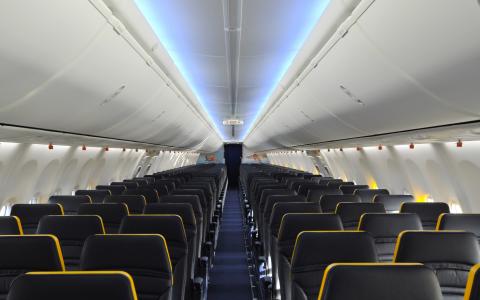
The proliferation of low-cost airlines flying out of the U.S. means that it’s now possible to hop to Europe for as low as half the price charged by major carriers, the New York Times writes. But there’s always a trade-off — and it pays to comparison-shop, according to the publication.
Not Always Cheaper, And Usually with Few Perks
Norwegian, for example, already flies out of 15 U.S. airports to Europe and the Caribbean and is adding even more options in the coming months, the Times writes. An October trip from New York to Paris on Norwegian comes in at least $140 lower than flights on Delta, United, Air France and British Airways, which offer tickets for around $700 to $800 in economy class, according to the publication. But a flight on French low-cost airline XL Airways comes in cheaper still — and a March non-stop round-trip flight is around $400, the Times writes.
But it’s not always the case that low-cost carriers beat out traditional airlines by price, according to the publication. For example, Level — which is owned by the same firm that owns Aer Lingus, Vueling, Iberia and British Airways — offered a direct ticket from Los Angeles to Barcelona in September on its most basic option for $1,029.72, the Times found. And while it was the cheapest nonstop, you could fly with a stop-over on KLM for just $723, according to the publication.
And when weighing these options, it’s important to remember that low-cost carriers have cut out many of the “perks” most travelers take for granted, the Times writes. The Norwegian flight to Paris doesn’t include seat selection, a checked bag nor a meal, according to the publication. XL Airways on the same flight at least offered a meal and a checked bag, the Times writes. Level, meanwhile, offers up-sell options: for a little less than a hundred dollars more for each leg, for example, travelers could get meals, a checked bag and the option to choose a seat, according to the publication.
In addition, the price discrepancy between low-cost carriers flying the same rout can run into the hundreds of dollars, the Times writes. What’s more, using a third-party air ticket search engine can often yield prices cheaper than those available on the low-cost carrier’s own website, according to the publication. So as with traditional airlines, it pays to shop around, including on sites such as Expedia and Google Flight search, the Times writes. And vacationers may want to weigh the money saved against the hassle of getting an assigned seat, no meals and no checked bags, according to the publication.
Commentary on the New York Times article by Stephanie Rosenbloom
Posted by: The Wealth Advisor



